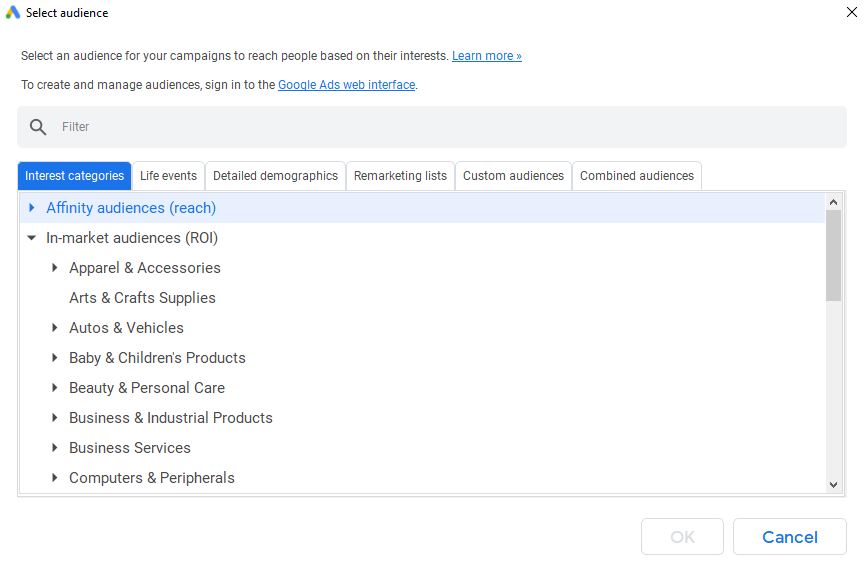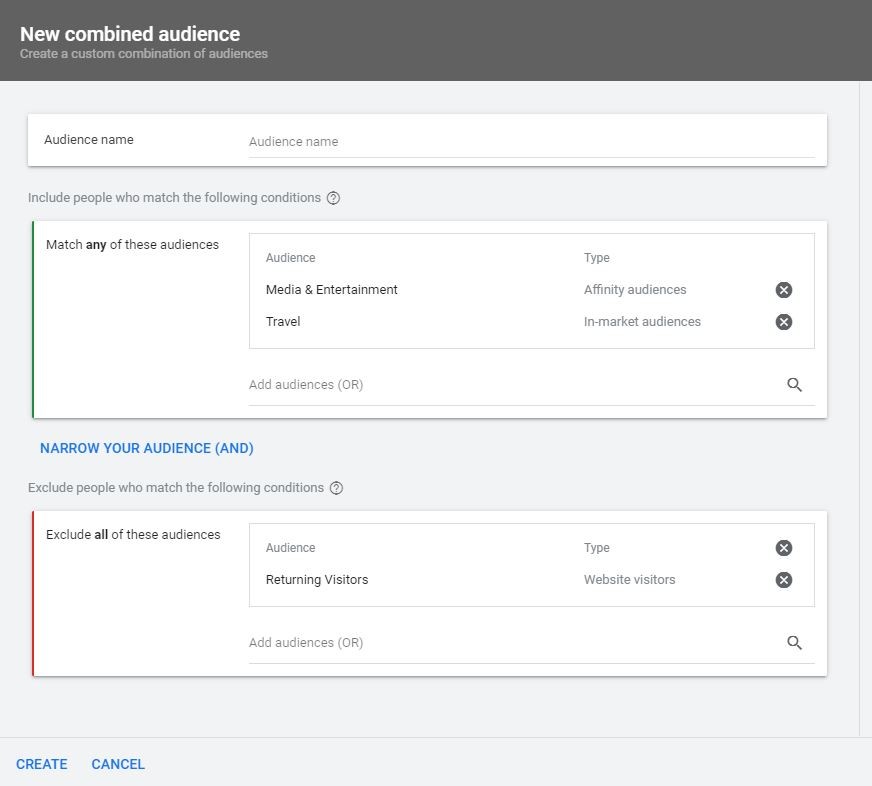In search engine marketing, there’s a handful of extra steps you can take to get more out of your campaigns. These have the potential to really benefit your online goals.
One of these tools is segmenting by audience types, which is a little extra effort for potentially a whole lot more for each cent you spend. Here’s why:
Why leverage audiences in your search engine marketing?
The one unifying reason to leverage audience types is the same as the reason for using many other search engine marketing tactics and tools: it makes your marketing more efficient. Taking advantage of different audience types allows your PPC budget to go further by reducing money spent on irrelevant traffic.
It also allows you to be more specific with your intent; for example, you can put more resources into different audience types depending on your goals — for example, increasing your general reach with an increase of new customers, or more aggressively bidding on audience types that are more likely to convert. You can also capture more indecisive users by exposing those audiences to multiple messages that would be wasted on others.
In general, segmenting by audience types gives you a clearer understanding of users’ intentions based on how they search followed by which actions they did or didn’t take.
What audience types are available?
Obviously though, the first step to utilizing audience types is identifying them. There are many that vary depending on PPC platform, but here we’re focusing on the “big four” that are pretty much all available in all platforms: in-market audiences, affinity audiences, remarketing lists, and combined audiences.
In-market audiences are pre-made audience lists that can be added to campaigns in Google and Microsoft Ads. There’s also a wide range of different segments available within this audience type (for example, “homeowners”). Users in this audience are in the “take action” phase of the conversion tunnel, meaning they’re actively seeking your products or services. These users aren’t necessarily familiar with your brand, but they know they need what you have.
Just like in-market audiences, affinity audiences are also first party pre-made audience lists that you can add to a campaign, but they’re only on Google. Unlike in-market, these contain users based on their interest in certain topics — but not exclusively those who are ready to take immediate action to seek out your services. Also like in-market, these users aren’t all familiar with your brand, and there can be a range of segmenting within affinity audiences.
Users on remarketing lists on the other hand, are all familiar with your brand because they’ve interacted with your site before by visiting a page or completing some other action. Within a remarketing list, you can set a certain timeframe “lookback window” to limit who enters or exists within your pool of users. For example, you could establish a remarketing pool to be people who’ve visited a page of yours within the last three months. Remarketing lists can be set up manually or auto-generated by a search engine or analytics program like Google Analytics.
Lastly is combined audiences. This is available in both Google and Microsoft Ads, where audience pools can layer multiple audience sources — these are called “personas.” For example, you could have a remarketing list, and then further whittle that down with a pre-made affinity audience on top of it. The end result is a very high-value audience, as users filtered accordingly are interested in your product and have previously interacted with your site.
So, we know the why and the what, but what about…
How to leverage audiences in your search engine marketing?
Nothing we’ve just talked about matters too much if you don’t actually use it. So where to go from there?
The specifics of course depends on your goals and which audiences you’re using, but a good general approach is to always be deliberate and concrete in A) identifying your goal and B) how an audience type would relate thereto. At a most basic level, you can have greater control over your spend by setting up a campaign to solely show ads to any of these types of audiences. Or, if you already have a campaign ongoing but want to increase your budget efficiency, you can apply an audience type within your existing campaign structure.
One obvious example of how to use these audience types is of course using remarketing lists to show your brand message to users who have previously visited your site but haven’t converted — whether that’s submitting a form fill, checking out with a purchase, etc. This can help streamline the move by customers down the conversion funnel.
In the right context, remarketing lists are also useful for excluding previous site visitors — this ensures, if you’re trying to expand your reach to new users, that you don’t waste spend on those who are already familiar with you.
For similar goals, affinity audience lists are good for campaigns to raise awareness among new users. In this sense, they can partner particularly well with broader keyword searches.
On the other hand, combined audiences are really helpful for improving your conversion rate; for example, targeting undecided customers that have visited one (or even better, multiple) of your pages and users with known interests in a relevant category.
There’s lots of different angles you can take with audience types; which to use, how to use them, and how to combine them. As long as you have a clear understanding of what you want to achieve and deliberately consider the factors that go into different relevant users, you’ll always have a good foundation here.






